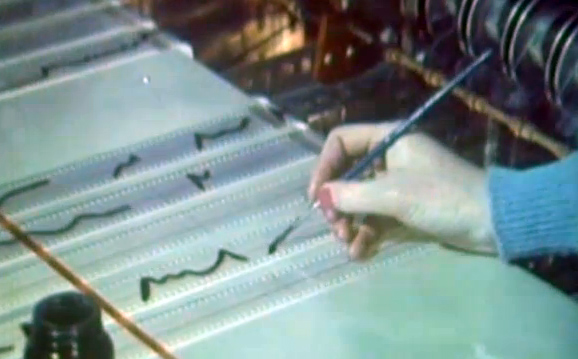
Oramics to Electronica
The Oramics Machine on display in the Science Museum, London
Unveiled to the public for the first time since its recovery, the long-lost Oramics Machine was the big draw to this exhibition in 2011 exploring the history of electronic music.
This hugely popular show was a temporary exhibition. It stayed up many months longer than originally planned but is now closed. The Oramics Machine is now in storage in the Science Museum and we will be reporting again, as soon as it is redisplayed.

The Science Museum exhibition Oramics to Electronica (2011) explored the history of electronic music through the work of three British studios: Electronic Music Studios (EMS), the BBC Radiophonic Workshop and Daphne Oram’s private studio in Tower Folly, Kent.
The centrepiece of the show was the original Oramics Machine, remarkably intact (not non-operational) after languishing for many years in a barn in France. All four elements of the Oramics apparatus were on display: the control console, loudspeaker cabinets, waveform scanner and amplifier. The control console will be familiar to anyone who has seen the famous photos of Oram painting waveforms on celluloid and glass as she leans over her machine.
This exhibition was an unparalleled opportunity to see Oram’s groundbreaking and historic machine. Talking at The Wire’s Daphne Oram salon in 2011, Dr Tim Boon, head of Science Museum research, remarked how little of Oramics machine had been lost or altered since it was last used by Oram. Only the celluloid film strips that move across the control console had to be replaced before it went on display. The originals had become discoloured, warped and too brittle to conserve in situ.



Oramics emulator
The exhibition also featured a digital, interactive Oramics emulator, devised by Goldsmiths University to faithfully reproduce the original Oramics machine’s capabilities.
Since then, Tom Richards has built a working prototype of the Mini-Oramics machine, based on Oram’s original notes and drawings.
Exhibition films
In addition to archive films of Oram, three new videos were commissioned for this show. They’re shown here with thanks to the Science Museum and the original artists:
Created by film makers Jen Fearnley and Nick Street, this shows the curators, musicians and 1960s electronic instrument makers who worked together to create the show. We see them at various stages of exhibition production, in storerooms, offices and on the museum floor.
Created by artist and writer Aura Satz, this film features the Oramics Machine and recordings of Oram reading from her book ‘An Individual Note on Sound Music and Electronics’ (1972).
While researching this exhibition with British pioneers of electronic music, many fascinating stories emerged. Not all these would make it into the exhibition floor but are shared here in this video of a reunion meeting, recorded on 29 September 2012.
The exhibition team
This exhibition was co-created by Science Museum curators, musicians and makers of 1960s electronic instruments. The team also worked with students from the National Youth Theatre’s Acting Up 2 course and a group of writers – women who provided their own interpretations of Oram’s life and work.